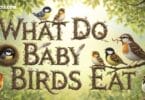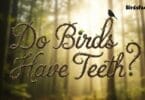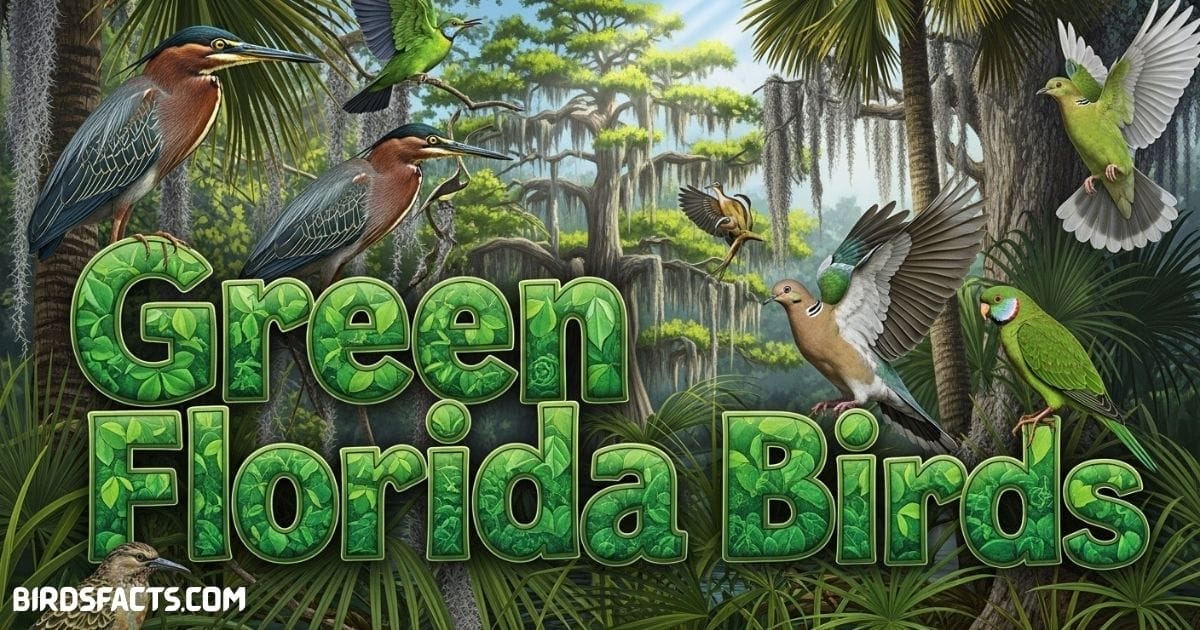
_Green Florida Birds
Have You Ever Been Out In Nature And Spotted A Flash Of Bright Green Wings Only To Wonder What Kind Of Bird It Was Many People Get Curious About The Unique And Color ful Species Found In Florida But Figuring Out Their Names Can Be A Little Frustrating. That’s Exactly Why Learning About Green Florida Birds Is So Exciting because Once You Know Them Every Walk Or Backyard Visit Feels Like A New Discovery.
From Tropical Parrots To Tiny Emerald Hummingbirds These Feathered Beauties Bring So Much Life To The Sunshine State. Whether You’re A Beginner Birdwatcher Or Just Someone Who Enjoys Seeing Wildlife Outside Your Window Exploring The World Of Green Florida Birds Will Give You A Fresh Perspective. Get Ready To Recognize And Enjoy The Most Stunning Green Florida Birds Found Across Florida’s Skies Trees And Gardens.
Green Florida Birds
- Blue-crowned Parakeet
- Budgerigar
- Blue-fronted Amazon
- Cuban Emerald
- Great Green Macaw
- Green Parakeet
- Green Budgerigar
- Hispaniolan Amazon
- Hispaniolan Parakeet
- Lilac-crowned Amazon
- Military Macaw
- Mitred Parakeet
- Monk Parakeet
- Nanday Parakeet
- Orange-winged Amazon
- Painted Bunting
- Painted Parakeet
- Red-lored Amazon
- Red-crowned Amazon Parrot
- Ruby-throated Hummingbird
- Red-masked Parakeet
- Red-shouldered Macaw
- Rose-ringed Parakeet
- Scarlet-fronted Parakeet
- White-eyed Parakeet
- White-winged Parakeet
- Yellow-chevroned Parakeet
- Yellow-headed Amazon
Blue-crowned Parakeet
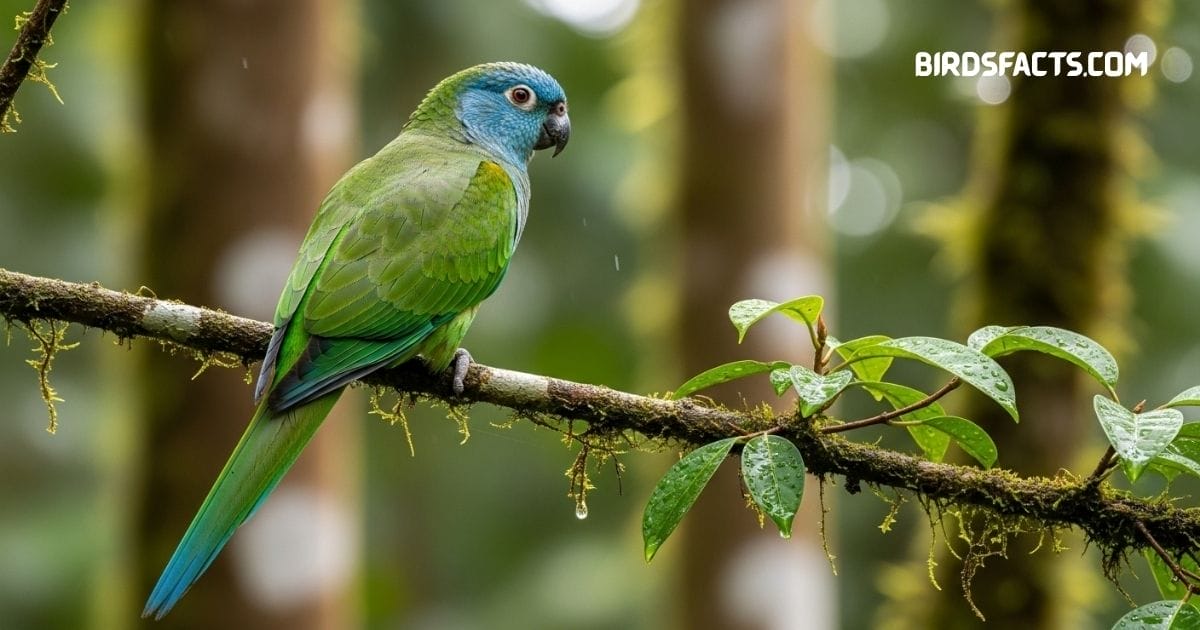
A Blue-crowned Parakeet With Bright Green Feathers And A Distinct Blue Head, Perched On A Branch In A Tropical Setting.
The Blue crowned Parakeet Is One Of The Most Charming Green Florida Birds With Its Green Feathers Highlighted By A Bluish Crown. Known For Their Playful Calls And Social Behavior They’re A Favorite Among Birdwatchers. These Exotic Pet Birds Often Escape Captivity And Form Small Feral Colonies, Thriving In Florida’s Warm Climate. Their Diet Of Fruits Seeds And Flowers Makes Them Frequent Visitors To Backyards And Parks.
People Are Often Surprised At How Resilient This Species Is. Despite Being Native To South America Blue crowned Parakeets Adapt Beautifully To Florida’s Urban And Suburban Environments. Their Chatter Is Lively, Making Them Noticeable Even Before They Come Into View. If You Enjoy Spotting Colorful Parakeets This Bird Is One Of The Easiest Introductions To The Diversity Of Green Florida Birds.
Budgerigar
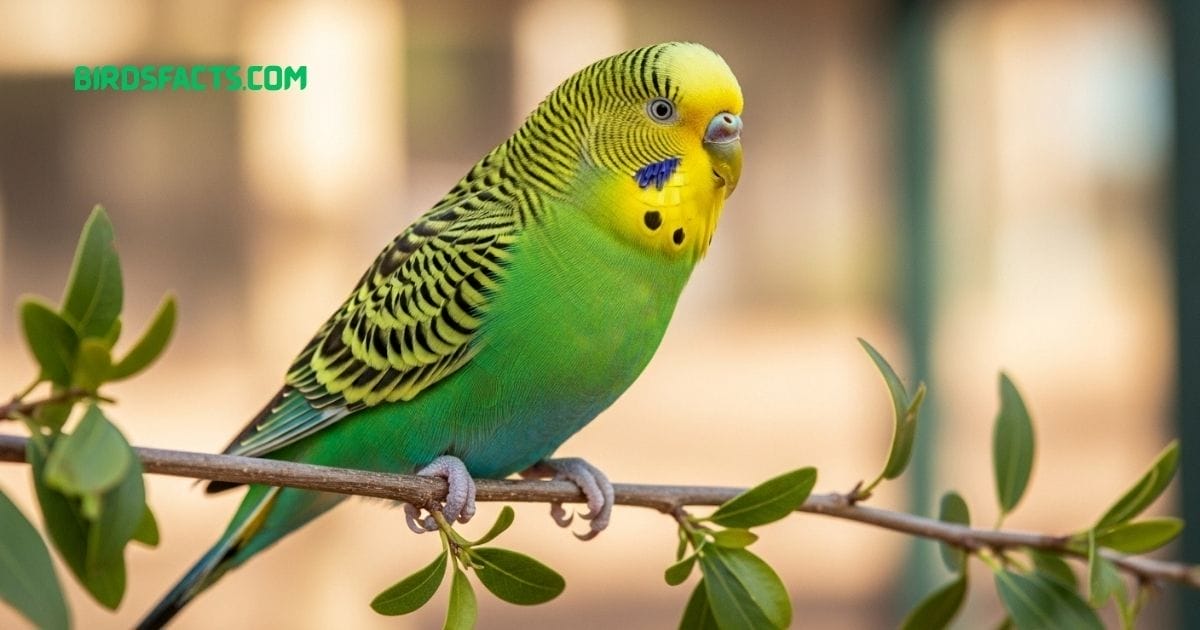
Budgerigars Also Known As “budgies ” Are Small Parakeets That Stand Out As Some Of The Tiniest Yet Most Beloved Green Florida Birds. Originally From Australia They Became Popular Pet Birds Worldwide And Occasionally Appear As Feral Flocks In Florida. Their Lime-green Bodies Black Streaks And Chirpy Personalities Make Them Delightful To Observe In Open Spaces.
Although Most Budgerigars In Florida Descend From Escaped Pets They’ve Shown That Small Parakeets Can Adapt Well To Local Conditions. You May Spot Them Perched On Power Lines Or Nibbling On Grass Seeds In Fields Their Size Makes Them Vulnerable To Predators But Their Flocking Behavior Provides Safety. Budgerigars Remind Us That Not All Green Florida Birds Are Wild-born; Some Are Here Thanks To Human Introductions.
Blue-fronted Amazon
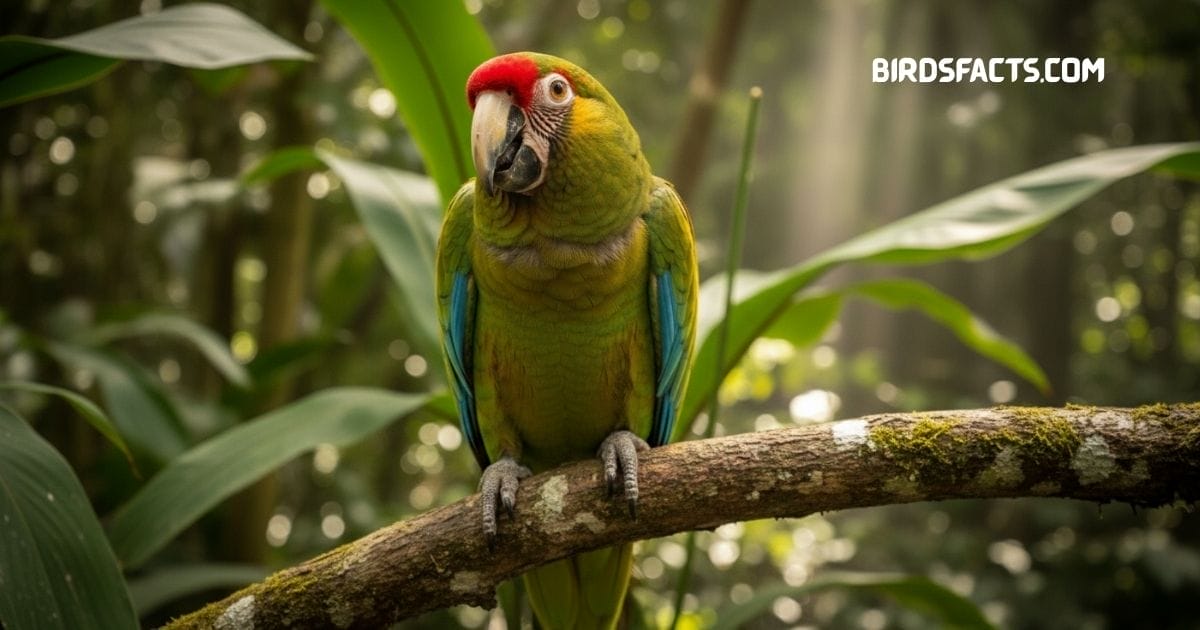
Blue-fronted Amazon Parrot With Bright Green Feathers And A Vivid Blue Forehead Sitting On A Branch
The Blue fronted Amazon Is A Striking Parrot That Immediately Captures Attention With Its Vivid Green Feathers And Bluish Facial Patch. Among The Many Green Florida Birds This One Is Admired For Its Intelligence And Ability To Mimic Human Speech Birdwatchers Often Hear Them Before They See Them As Their Calls Are Loud And Unmistakable.
These Parrots Are Originally From South America But Have Adapted Well To Florida’s Subtropical Habitats. Blue fronted Amazons Enjoy Fruit Trees, Where They Feed On Berries Nuts And Seeds. Their Playful Behavior Makes Them Fun To Watch, And They’re Considered Among The Most Popular Pet Birds Worldwide. If You’re Lucky Spotting One Of These In The Wild Feels Like Stumbling Upon A Tropical Treasure Among Green Florida Birds.
Chestnut-fronted Macaw
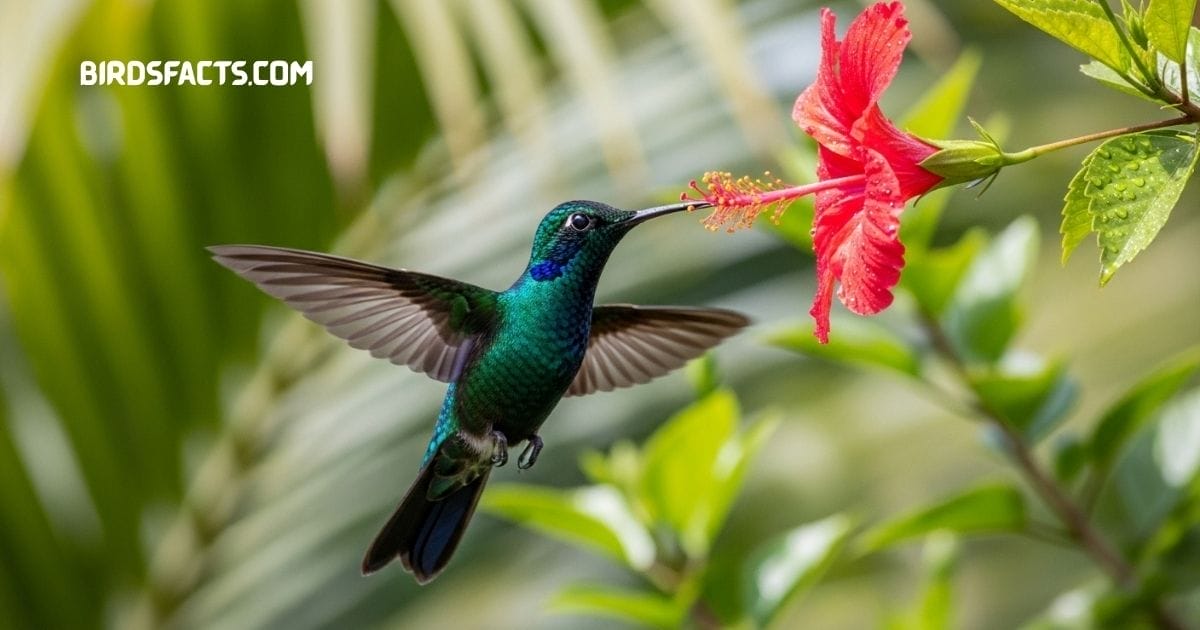
Cuban Emerald Hummingbird With Shimmering Green Plumage Hovering Near A Flower
Chestnut-fronted Macaws Are Medium sized Macaws That Proudly Represent The Diversity Of Green Florida Birds With Their Green Bodies And Chestnut colored Forehead They’re Both Elegant And Bold. They’re Intelligent Parrots That Often Gather In Noisy Flocks Filling The Air With Chatter. For Birdwatchers The Sight Of These Macaws Flying Overhead Is Unforgettable.
In Florida They’ve Established Small Feral Populations After Escaping Captivity. Their Strong Beaks Help Them Crack Open Hard Nuts While Their Acrobatic Flight Makes Them Stand Out Against The Blue Sky. These Exotic Parrots Are Also Popular As Pets But In The Wild They Thrive In Groups. Observing Chestnut-fronted Macaws Adds An Exotic Touch To The Experience Of Seeing Green Florida Birds In Urban Landscapes.
Cuban Emerald
The Cuban Emerald Is A Jewel Among Green Florida Birds. This Tiny Hummingbird Shines With Emerald green Plumage That Glitters In The Sunlight. It’s One Of The Hummingbird Species Occasionally Spotted In Florida Especially In The Keys. Their Rapid Wingbeats And Darting Movements Make Them Thrilling To Watch Near Flowering Plants.
Though Rare Visitors Cuban Emeralds Embody The Magic Of Migratory Hummingbirds In Florida’s Ecosystem. They Sip Nectar From Hibiscus And Other Tropical Blossoms, Bringing Life And Energy To Gardens. Seeing One Is A Treat For Any Bird Enthusiast Because Their Colors Are Dazzling. These Little Gems Remind Us That Not All Green Florida Birds Are Large Parrots sometimes Beauty Comes In The Smallest Packages.

Cuban Emerald Hummingbird With Shimmering Green Plumage Hovering Near A Flower
Great Green Macaw
As One Of The Largest Green Florida Birds The Great Green Macaw Is A Breathtaking Sight. Its Massive Size Strong Wings And Brilliant Green Plumage Make It Stand Out Even Among Florida’s Exotic Birdlife Originally From Central And South America It’s Occasionally Kept As An Exotic Pet And Sometimes Spotted In Feral Populations.
This Species Is Considered Endangered In Its Native Range Which Makes Sightings In Florida Even More Special Great Green Macaws Feed On Fruits And Seeds Often Using Their Powerful Beaks To Crack Nuts. Their Calls Are Loud And Commanding Echoing Through The Trees For Birdwatchers Spotting This Macaw Is A Reminder Of How Global Parrot Species Enrich The Diversity Of Green Florida Birds.
Green Parakeet
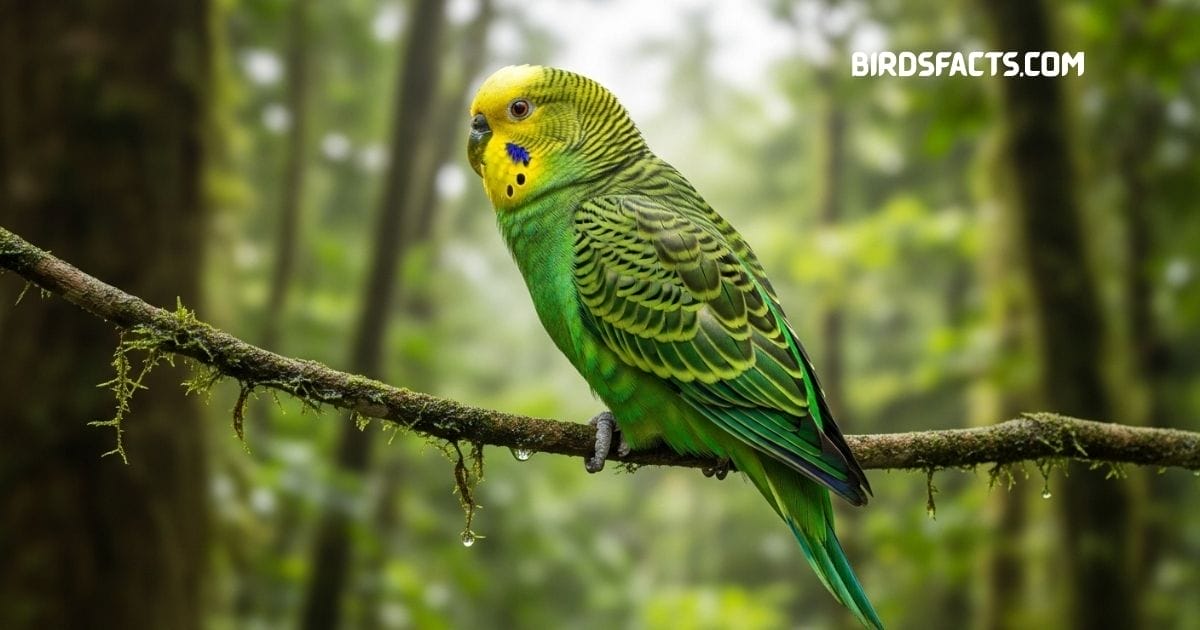
Green Parakeet With Bright Green Plumage Perched On A Tree Branch
The Green Parakeet Is Another Lively Addition To The Lineup Of Green Florida Birds With Their Uniform Green Plumage And Energetic Personalities They Often Gather In Large Flocks That Fill The Sky With Sound And Motion These Parakeets Are Native To Mexico But Have Become Established In Florida’s Urban And Suburban Areas.
You’ll Often Spot Them Nesting In Palm Trees Noisy And Playful As They Interact With One Another. Their Adaptability Helps Them Thrive In Cities Parks And Even Golf Courses. Though Sometimes Confused With Other Small Parakeets Their Constant Chatter Makes Them Easy To Recognize Watching Green Parakeets Fly In Unison Is One Of The Most Exciting Encounters With Green Florida Birds.
Green Budgerigar
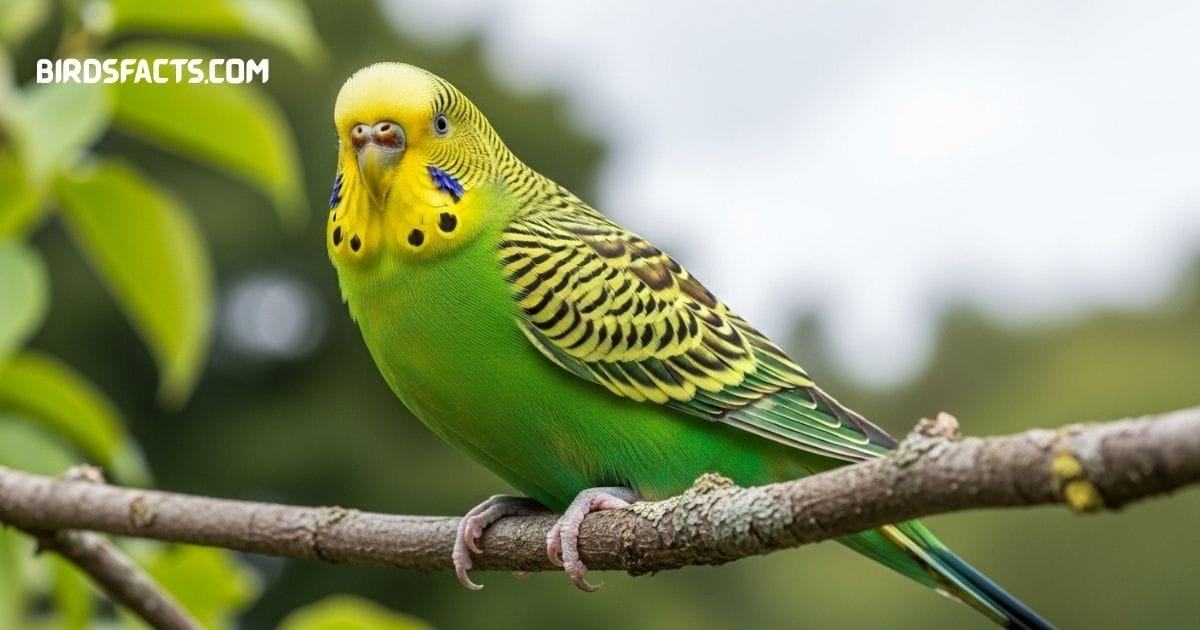
Green Budgerigar Parakeet With Bright Green Body And Yellow Face Perched On A Wooden Branch
The Green Budgerigar Closely Related To The Familiar Budgie, Also Appears Among Green Florida Birds These Small Parakeets Often Feature Bright Green Plumage With Black Barring On Their Wings. In Florida Escaped Populations Sometimes Survive In Favorable Conditions, Especially Where Food Is Plentiful.
Though Tiny They Have Big Personalities. Green Budgerigars Chirp Loudly, Forage In Groups And Add Color To Grassy Habitats. They Symbolize The Charm Of Small Parakeets That Have Made Florida Their Second Home Seeing A Flock Of Them Feels Like Watching A Miniature Rainbow In Flight Adding Another Layer To The Rich Story Of Green Florida Birds.
Hispaniolan Amazon

Hispaniolan Amazon Parrot With Bright Green Plumage And Blue-tinted Wings Perched On A Branch
The Hispaniolan Amazon Is A Rare And Striking Member Of The Green Florida Birds Community. With Its Emerald Body Red Throat Patch And Expressive Eyes, It’s Instantly Recognizable Originally From The Caribbean, Particularly Hispaniola, It Sometimes Shows Up In Florida Due To Escaped Or Released Pet Birds.
Known For Their Intelligence And Strong Personalities, These Parrots Often Gather In Small Groups Filling The Air With Loud Calls. They Thrive In Subtropical Habitats Where Fruiting Trees Provide Abundant Food For Bird Lovers Spotting A Hispaniolan Amazon Is A Special Treat Since It Connects Florida’s Ecosystems With Caribbean Parrot Heritage. These Unique Links Make Them An Unforgettable Part Of The Story Of Green Florida Birds.
Hispaniolan Parakeet
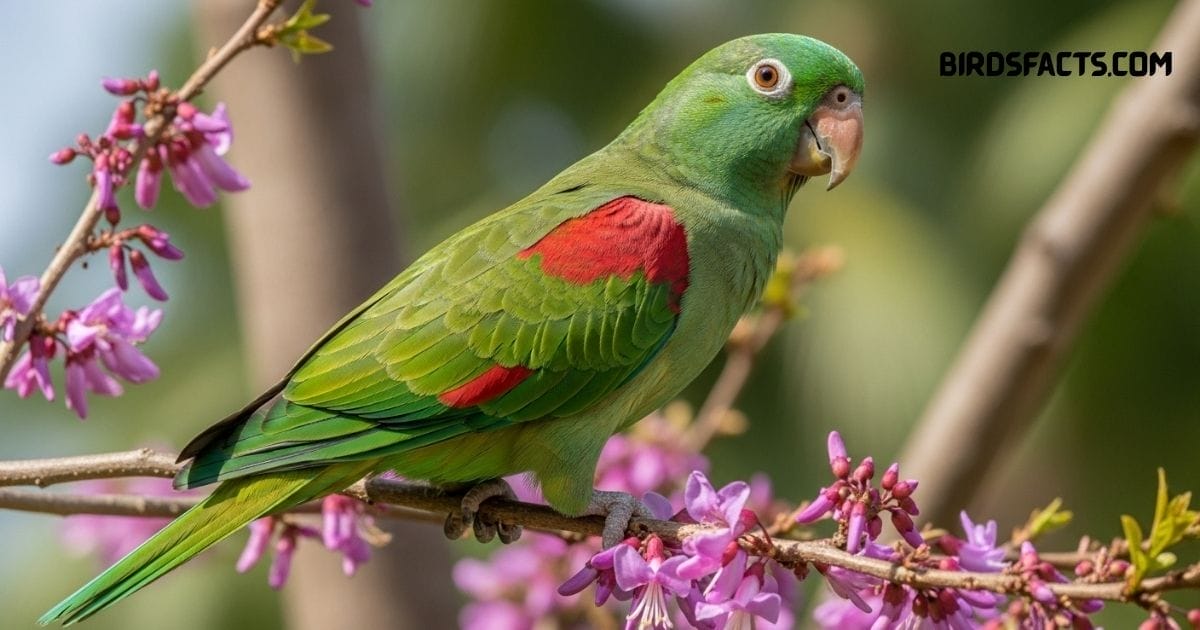
Hispaniolan Parakeet With Bright Green Plumage Perched On A Tree Branch
The Hispaniolan Parakeet Is Another Lively Addition To The World Of Green Florida Birds With Its Bright Green Feathers And High Pitched Calls It’s Easy To Notice These Birds When They Gather In Flocks Native To The Island Of Hispaniola They Have Occasionally Been Spotted In Florida After Escaping Captivity.
They Thrive In Warm Subtropical Environments, Often Feeding On Fruits Seeds And Blossoms Their Playful Behavior And Tendency To Form Large Noisy Groups Make Them Exciting To Watch Although Not As Common As Some Other Parakeets Seeing A Hispaniolan Parakeet In The Wild Is A Special Experience For Bird Enthusiasts Who Love Exploring The Diversity Of Green Florida Birds.
Lilac-crowned Amazon

Lilac-crowned Amazon Parrot With Green Body And Lilac-colored Crown Perched On A Branch
The Lilac-crowned Amazon Is A Colorful Parrot That Stands Out Among Green Florida Birds Thanks To Its Green Plumage With A Lilac-colored Crown Known For Being Intelligent And Social These Parrots Are Often Kept As Pets Which Is Why Some Have Established Small Feral Populations In Florida.
They Prefer Areas With Fruiting Trees, Where They Feed On Seeds Nuts And Berries. Their Playful And Vocal Behavior Makes Them Hard To Miss Once They’re Nearby Because They’re Skilled Mimics Some Can Even Imitate Human Speech For Birdwatchers Spotting A Lilac crowned Amazon Is Always A Memorable Moment In The Wide Variety Of Green Florida Birds.
Military Macaw

Military Macaw With Bright Green Feathers And Red Forehead Perched On A Tree Branch
Among The Larger Green Florida Birds The Military Macaw Makes An Unforgettable Impression. Its Strong Green Plumage, Accented With A Bright Red Forehead Gives It A Bold Yet Regal Look. Originally From Mexico And South America These Macaws Are Sometimes Seen In Florida Due To The Pet Trade.
They’re Known For Being Intelligent Loud And Highly Social Military Macaws Usually Fly In Pairs Or Small Flocks Filling The Sky With Their Harsh Calls. Their Strong Beaks Allow Them To Crack Hard Nuts And Seeds. Watching One Soar Overhead Is A Reminder Of How Diverse And Striking The Collection Of Green Florida Birds Truly Is.
Mitred Parakeet
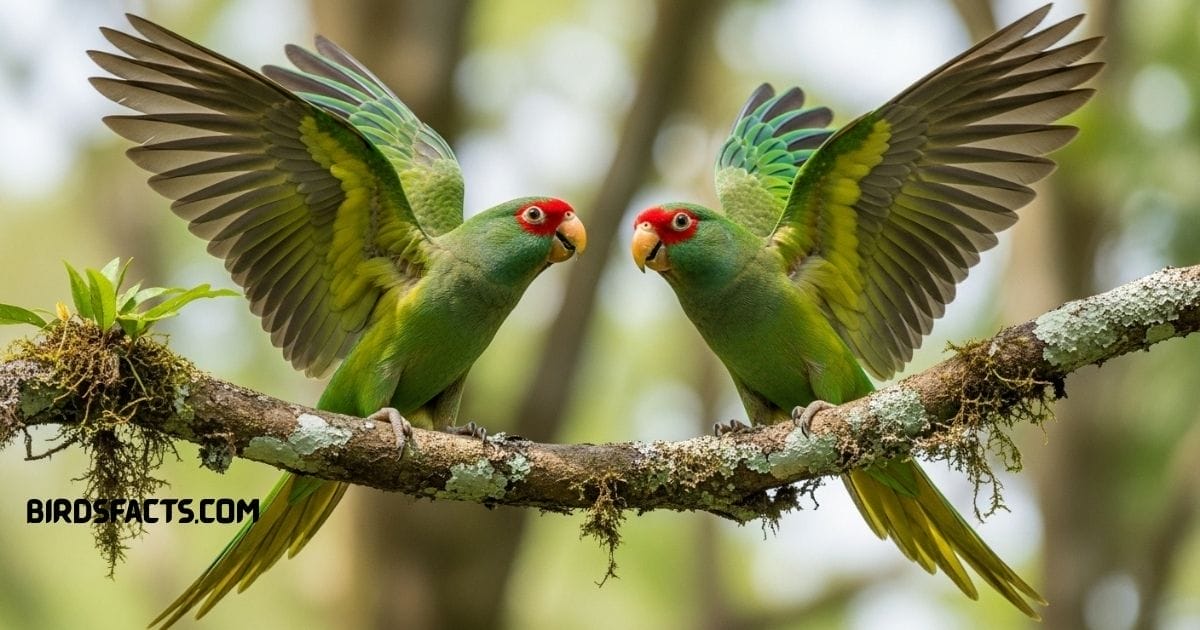
Mitred Parakeet With Bright Green Body And Red Markings Around The Face Perched On A Branch
The Mitred Parakeet Is A Medium sized Parakeet That’s Easy To Identify Among Green Florida Birds Due To Its Green Body Accented With Red Patches On The Face And Wings. They’re Native To South America But Have Become Established In Several Florida Neighborhoods.
These Parakeets Thrive In Palm Trees And Urban Areas Where They Build Communal Nests And Feed On Fruits. Their Noisy Flocks Often Draw Attention As They Fly In Synchronized Groups. Because Of Their Adaptability Mitred Parakeets Are Among The Most Successful Feral Parrots In The State. For Bird Lovers They Showcase The Colorful Charm Of Green Florida Birds In Everyday Settings.
Monk Parakeet
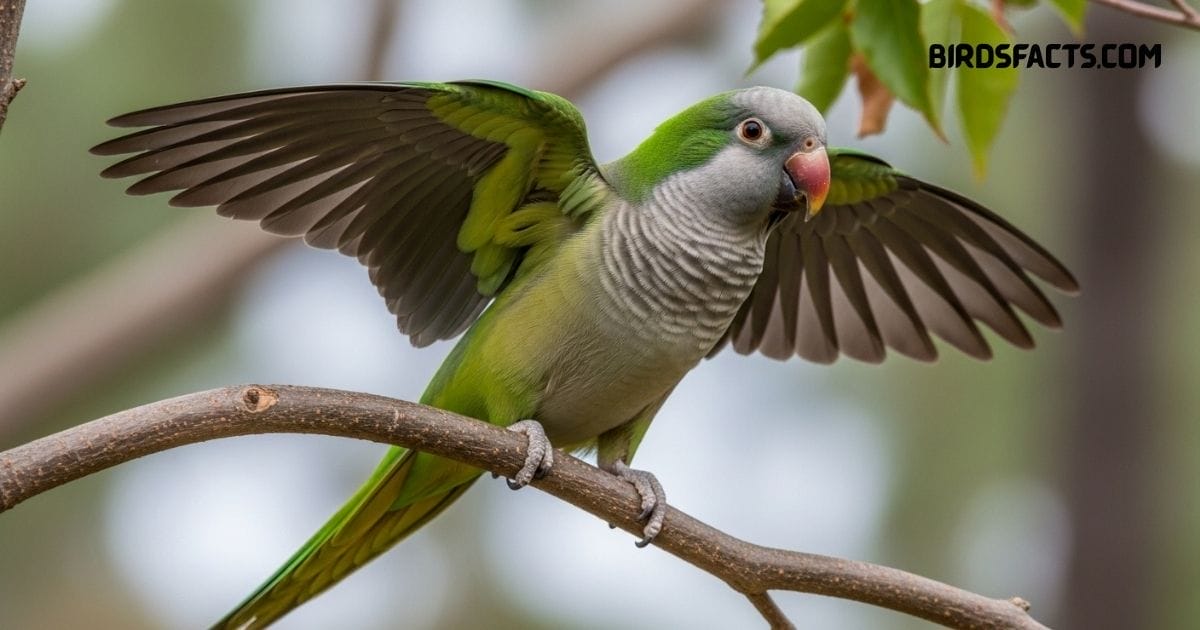
Monk Parakeet With Green Wings And Pale Gray Chest Perched On A Branch
The Monk Parakeet Also Called The Quaker Parrot Is One Of The Most Famous Green Florida Birds. With Bright Green Plumage And Grayish Faces They’re Highly Social And Easy To Spot In Parks Suburbs And Cityscapes. Unlike Most Parrots They Build Large Stick Nests Instead Of Nesting In Tree Cavities.
These Nests Often House Multiple Pairs Making Monk Parakeet Colonies Bustling And Full Of Activity. They Feed On Seeds Fruits And Buds Sometimes Raiding Backyard Feeders. Birdwatchers Enjoy Their Lively Personalities And Bold Behavior. As One Of Florida’s Most Established Exotic Parakeets Monk Parakeets Are Iconic Members Of The Green Florida Birds Community
Nanday Parakeet

Nanday Parakeet with bright green body and distinctive black head perched on a branch
The Nanday Parakeet Also Called The Black-hooded Parakeet Is A Striking Member Of The Green Florida Birds Family. Its Green Body Contrasts Beautifully With Its Black Head And Blue Tail Feathers Making It Stand Out In Flight. Large Flocks Of Nanday Parakeets Are Commonly Seen Across Florida’s Urban Areas.
They Are Social Loud And Playful Often Forming Colonies In Palm Trees Or Power Poles. Their Adaptability Allows Them To Thrive In Both Cities And Open Woodlands Because They’re So Bold And Energetic They’ve Become A Favorite Among Local Birdwatchers. Nanday Parakeets Show How Exotic Species Have Blended Into The Colorful World Of Green Florida Birds.
Orange-winged Amazon

Orange-winged Amazon Parrot With Green Body And Orange-yellow Wing Feathers Perched On A Branch
The Orange winged Amazon Is A Bold And Noisy Parrot That Earns Its Place Among Green Florida Birds. It Has A Mostly Green Body But Flashes Bright Orange On Its Wings During Flight. Native To South America It Has Established Some Feral Populations In Florida Due To Escaped Pets.
They Are Strong Fliers And Excellent Mimics Often Surprising People With Their Ability To Copy Human Voices. In The Wild They Feed On Fruits Nuts And Seeds Usually In Flocks. Their Loud Calls Can Often Be Heard Before They Are Seen. Among The Many Green Florida Birds Orange winged Amazons Are Both Eye-catching And Entertaining.
Painted Bunting
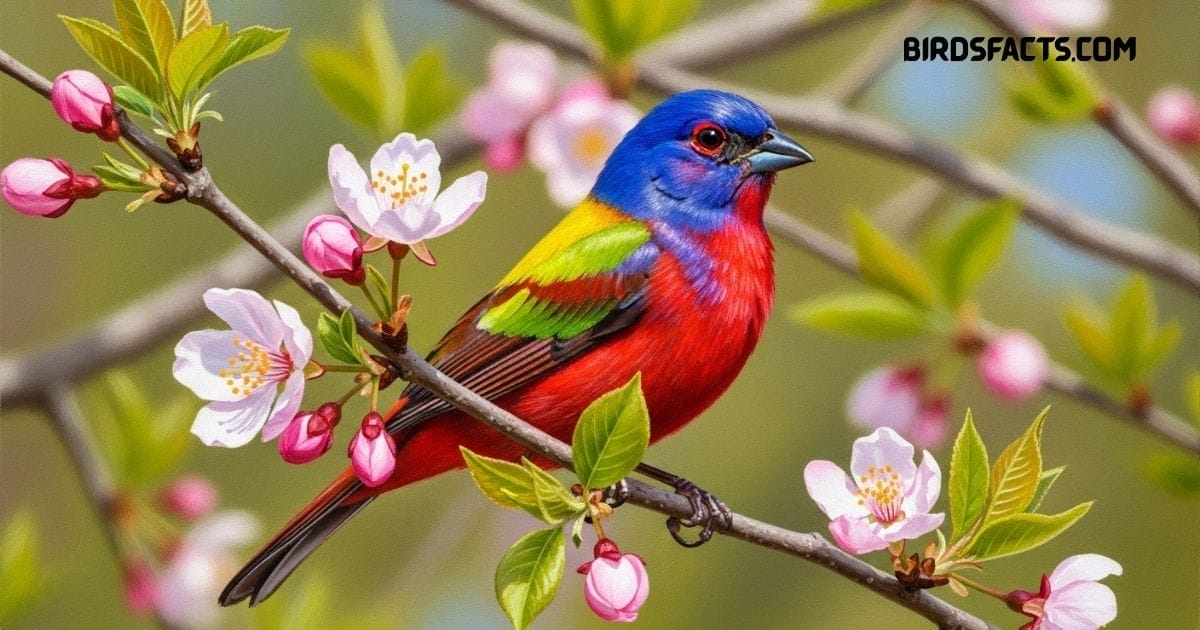
Painted Bunting Songbird With Bright Blue Head, Red Chest, And Green Back Perched On A Branch
The Painted Bunting May Be One Of The Most Colorful Green Florida Birds Though Only The Males Display The Bright Rainbow like Plumage. Females And Juveniles However Are Dressed In Soft Green Feathers That Allow Them To Blend Into Florida’s Greenery. This Makes The Species A Surprising But Fitting Addition To The Group.
They Prefer Shrubby Habitats Gardens And Thickets Where They Feed On Seeds And Insects. Birdwatchers Especially Enjoy Seeing Males In Full Breeding Colors But The Green Females Are Just As Beautiful In Their Subtle Way. Painted Buntings Highlight The Diversity Of Green Florida Birds Showing That Even Songbirds Can Add To Florida’s Tropical Charm.
Painted Parakeet

Painted Parakeet With Green Body, Red Belly, And Blue-tipped Wings Perched On A Branch
The Painted Parakeet Is A True Beauty Among Green Florida Birds Known For Its Shimmering Green Plumage With Touches Of Red Yellow And Blue. Its Colorful Appearance Makes It Look Almost Like A Living Rainbow. Though Not As Widespread As Some Other Parakeets, Escaped Individuals Have Been Reported In Florida.
These Birds Are Playful Social And Usually Found In Small Groups. They Prefer Fruiting Trees, Where They Feed On Seeds, Berries, And Blossoms. While Rare To Encounter Spotting A Painted Parakeet Is Always Special Because Of Its Vivid Colors. It’s A Perfect Reminder Of The Tropical Vibrancy That Green Florida Birds Bring To The State.
Red-crowned Amazon Parrot
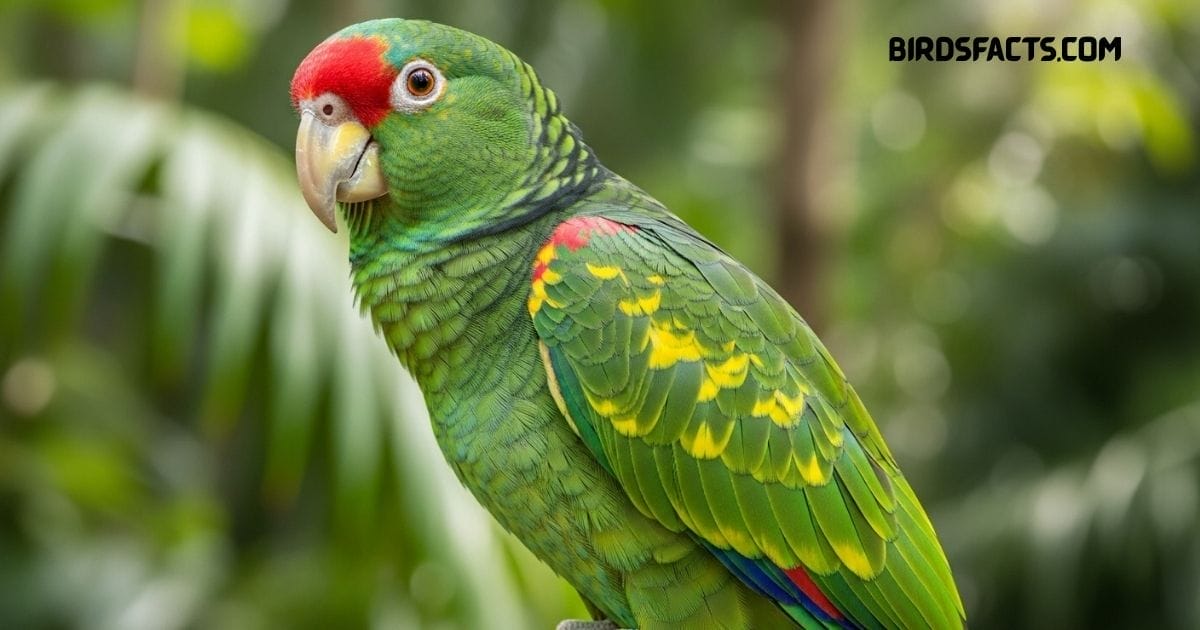
Red-crowned Amazon Parrot With Bright Green Body And Vivid Red Crown Perched On A Branch
The Red crowned Amazon Parrot Is A Medium sized Parrot Native To Mexico And Parts Of Southern United States. Its Most Striking Feature Is The Bright Red Patch On The Top Of Its Head While The Rest Of Its Body Is Mostly Green. These Parrots Are Very Social And Active Often Found In Noisy Flocks. They Usually Feed On Fruits Seeds Berries And Flowers Which Provide Them With Energy And Nutrition.
This Parrot Is Also Known For Its Intelligence And Ability To Mimic Human Speech Which Makes It A Popular Pet. Unfortunately Its Population Is Declining Because Of Deforestation And Illegal Trapping For The Pet Trade. The Red crowned Amazon Parrot Is Now Listed As An Endangered Species And Conservation Efforts Are Being Made To Protect Its Natural Habitat And Ensure Its Survival.
Ruby-throated Hummingbird
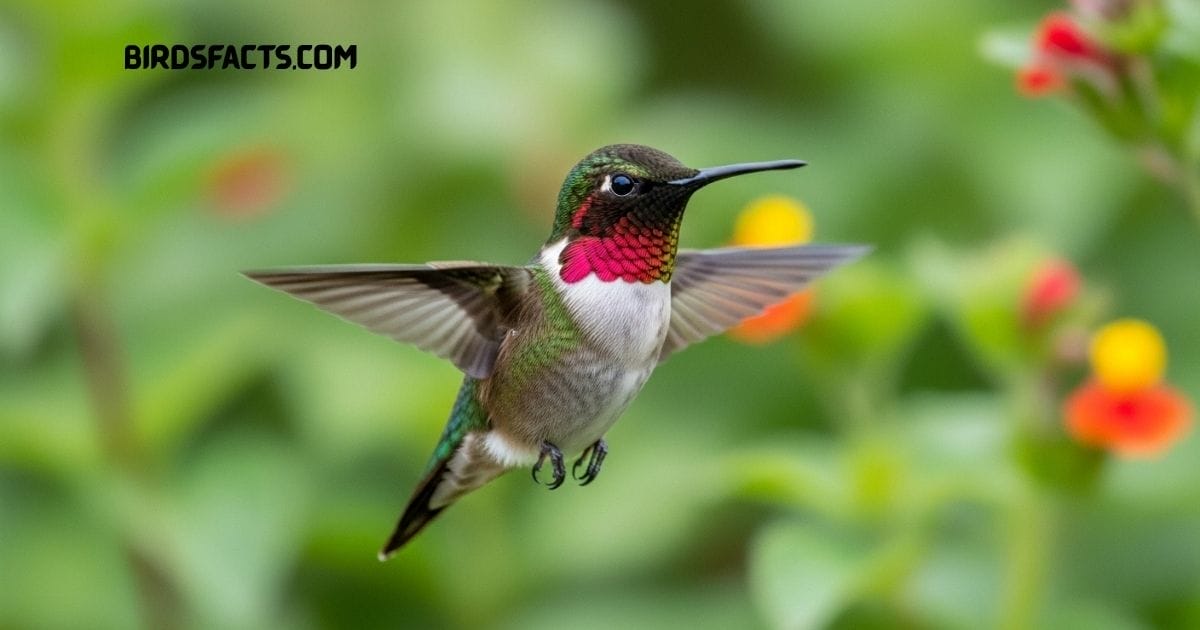
Ruby-throated Hummingbird Hovering Near A Flower With Its Bright Red Throat Shining
The Ruby throated Hummingbird Is A Very Small Bird Found Mostly In North America. It Is Famous For The Bright Ruby red Patch On The Throat Of The Male While Females Usually Have Plain White Throats. This Hummingbird Has Rapid Wingbeats That Allow It To Hover In The Air While Feeding. Its Diet Mainly Consists Of Flower Nectar Along With Small Insects And Spiders For Extra Protein.
These Birds Are Known For Their Long Migrations Traveling Thousands Of Kilometers Between North And Central America Every Year The Ruby throated Hummingbird Plays An Important Role In Pollination As It Transfers Pollen From Flower To Flower While Feeding. Despite Its Tiny Size It Is Energetic Fast And One Of The Most Admired Hummingbirds In The World.
Red-shouldered Macaw

Red-shouldered Macaw With Bright Green Plumage And Red Shoulder Patches Perched On A Branch
The Red shouldered Macaw Is The Smallest Species Of Macaw Native To The Tropical Forests Of South America. Its Body Is Mostly Bright Green With A Distinct Red Patch On Its Shoulders And Under The Wings Which Gives It Its Name. These Birds Are Lively Intelligent And Very Social Often Seen In Small Groups Or Pairs. They Feed On Fruits Seeds Nuts And Berries Using Their Strong Beaks To Crack Hard Shells.
Because Of Their Playful Nature And Ability To Learn Simple Tricks Red shouldered Macaws Are Popular As Pets. They Quickly Bond With Their Owners And Can Live For Many Years In Captivity With Proper Care In The Wild They Are Important For The Ecosystem As They Help In Seed Dispersal And Maintaining The Health Of Forest Habitats.
Red-masked Parakeet
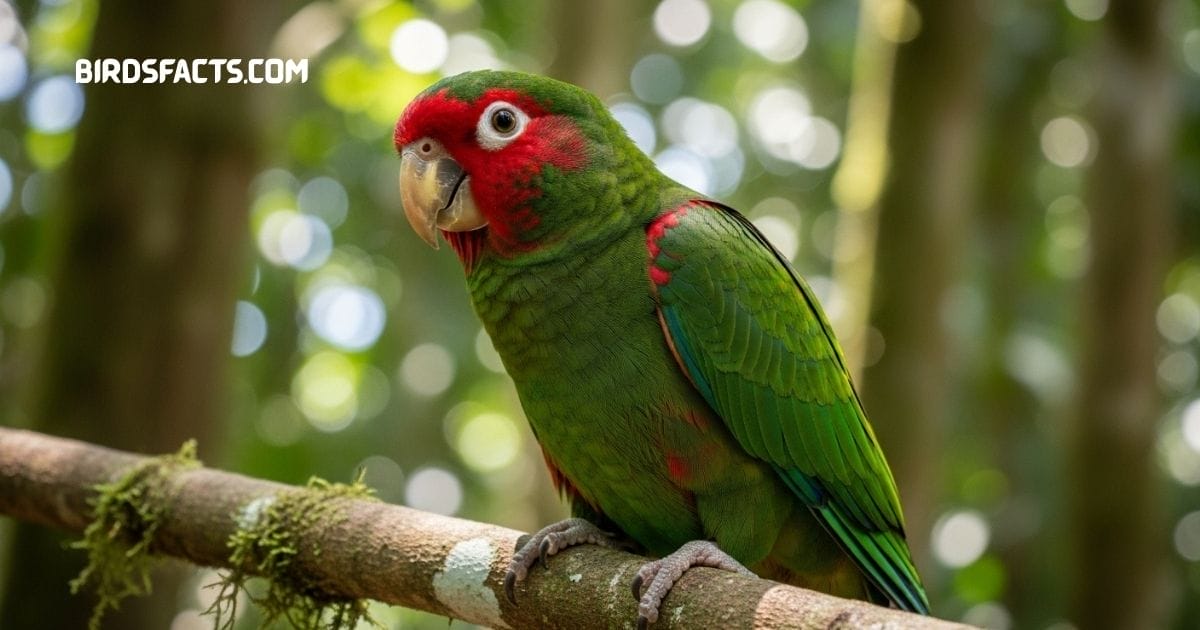
Red-masked Parakeet With Bright Green Body And Red Face Perched On A Branch
The Red masked Parakeet Also Known As The Cherry headed Conure Is A Dazzling Sight Among Green Florida Birds. Its Bright Green Plumage Contrasts Beautifully With Its Red Head Making It Instantly Recognizable These Parakeets Are Native To Ecuador And Peru But Have Been Introduced To Parts Of Florida.
They Are Playful Social And Known For Forming Noisy Flocks That Roost In Urban Areas. Their Diet Includes Fruits Seeds And Flowers Often Attracting Them To Residential Neighborhoods. Bird Enthusiasts Love Spotting Them Because Of Their Stunning Colors And Lively Personalities Red masked Parakeets Are Another Vibrant Reminder Of The Exotic Mix Found Among Green Florida Birds.
Red-lored Amazon
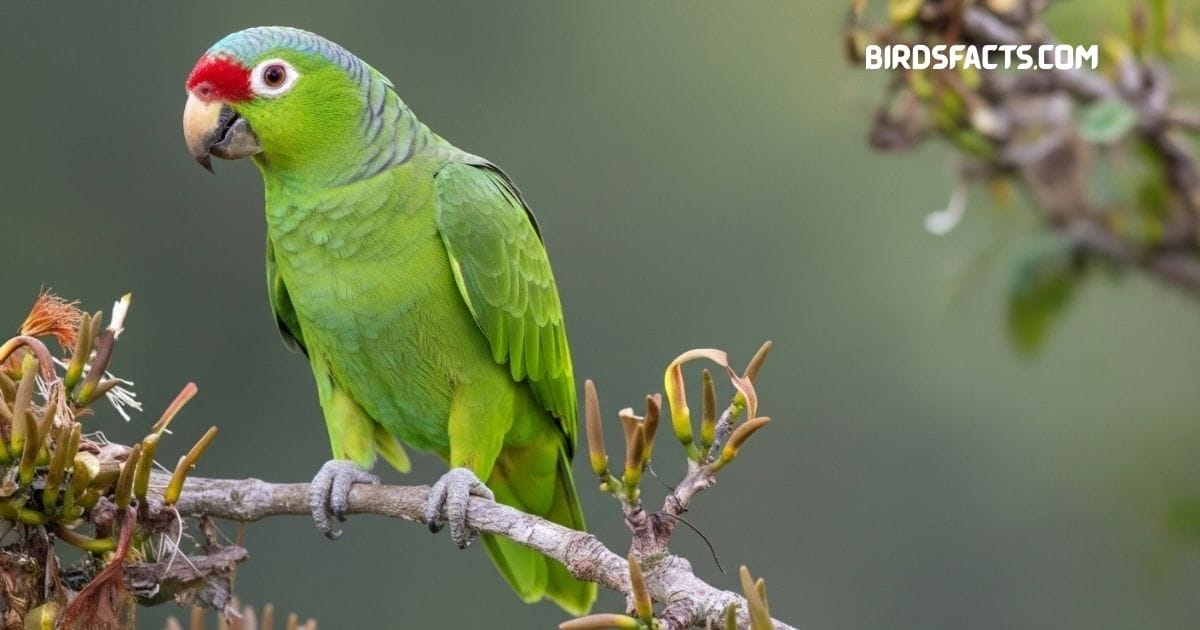
Red-lored Amazon Parrot With Bright Green Plumage And Vivid Red Patch On The Forehead Perched On A Branch
The Red lored Amazon Is A Medium sized Green Parrot Known For Its Bright Red Patch On The Forehead And Yellow Cheeks It Is Mostly Found In Central And South America Living In Tropical And Subtropical ForestsThese Birds Usually Live In Groups And Communicate With Loud Calls Their Diet Mainly Includes Fruits Seeds Berries And Nuts Which They Skillfully Crack Open With Their Strong Beaks.
This Parrot Is Very Intelligent And Has The Ability To Mimic Human Voices And Different Sounds Which Makes It A Popular Pet The Balance Of The Forest Red lored Amazons Are Social Colorful And Full Of Energy Making Them One Of The Most Admired Species Of Amazon Parrots.
Rose-ringed Parakeet
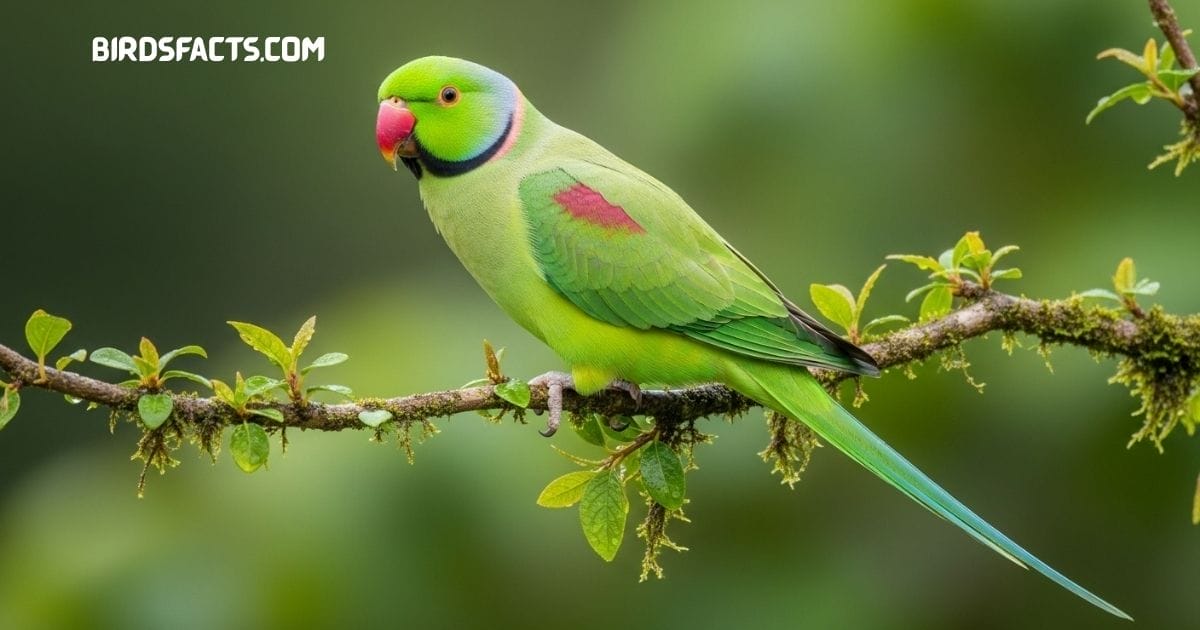
Rose-ringed Parakeet With Bright Green Plumage And Red Beak Perched On A Branch
The Rose ringed Parakeet Has A Striking Green Body And A Pinkish Ring Around The Male’s Neck Making It One Of The More Exotic Green Florida Birds Native To Africa And Asia It Has Established Wild Populations In Florida Thanks To Escaped Pets These Parakeets Are Lively Noisy And Often Seen Feeding On Fruits In Backyards.
Known For Their Intelligence And Ability To Mimic Human Speech Rose ringed Parakeets Are Also Beloved As Pets In The Wild They Prefer Open Woodlands And Suburban Areas Where Food Is Abundant. Their Bright Colors And Energetic Flight Patterns Always Catch The Eye Of Anyone Lucky Enough To Spot Them.
Scarlet-fronted Parakeet

Scarlet-fronted Parakeet With Green Body And Bright Red Forehead Perched On A Branch
The Scarlet fronted Parakeet with its vivid scarlet forehead against a green body is another striking parrot species seen in Florida. These birds are loud sociable and often travel in flocks making them easy to identify among Green Florida Birds. They are native to South America but thrive in Florida’s mild climate.
Often called the Scarlet fronted Conure they are playful and highly active. In residential areas they are known to raid fruit trees and enjoy ornamental plants. Their adaptability ensures they blend well into both urban and sem rural environments Observing them in groups is an unforgettable experience for birdwatchers.
White-eyed Parakeet

White-eyed Parakeet With Bright Green Body And Red Patches Perched On A Tree Branch
The White eyed Parakeet Gets Its Name From The Striking Pale Ring Around Its Eye. Its Green Body And Lively Nature Make It A Prominent Member Of The Green Florida Birds Community. These Parakeets Form Large Flocks That Can Often Be Seen Flying Over City Parks And Farmlands.
Known For Their Strong Social Bonds White eyed Parakeets Communicate Constantly With Loud Calls They Are Excellent Fliers And Prefer Open Spaces Where They Can Travel In Groups. Their Vibrant Presence Adds A Splash Of Tropical Energy To Florida’s Avian Diversity Making Them A Favorite Among Birdwatchers.
White-winged Parakeet
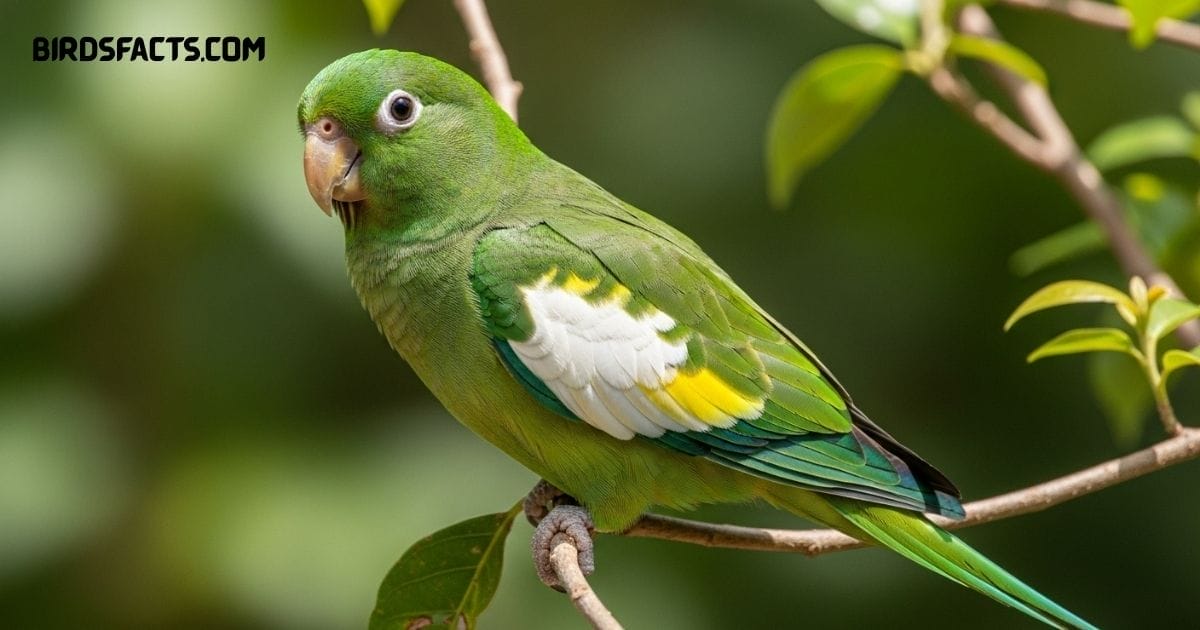
White-winged Parakeet With Bright Green Plumage And White Wing Patches Perched On A Branch
The White winged Parakeet Stands Out With Distinct White Patches On Its Wings Against A Green Body. It Is Another Parrot Species That Has Established Itself Among Green Florida Birds Due To Released Or Escaped Pets. These Birds Often Nest In Cavities And Are Quite Comfortable In Suburban Landscapes.
They Are Also Known As Canary winged Parakeets And Were Once Very Popular In The Pet Trade Their Adaptability Allows Them To Find Food Easily In Both Urban And Rural Settings. Seeing Them Perched In Flocks Or Darting Across The Sky Is Always An Exciting Moment For Florida Birdwatchers.
Yellow-chevroned Parakeet
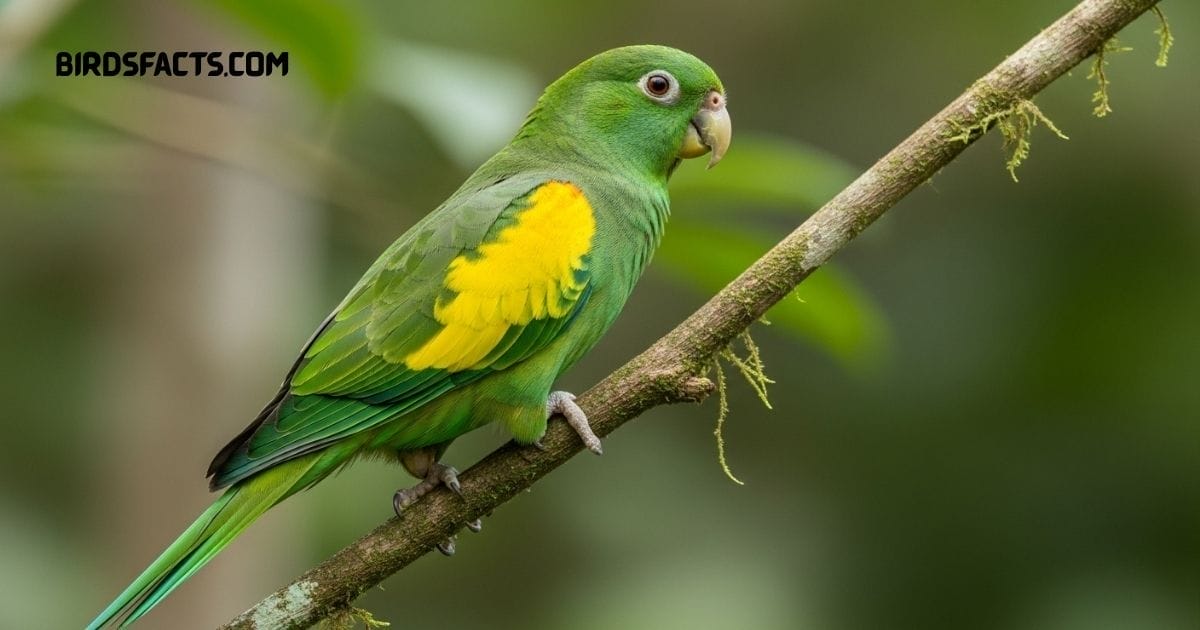
Yellow-chevroned Parakeet With Bright Green Plumage And Yellow Wing Markings Perched On A Branch
The Yellow chevroned Parakeet Is A Small Lively Parrot With Bright Green Plumage And Yellow Markings On Its Wings. Its Cheerful Presence Makes It A Standout Among Green Florida Birds Often Found In City Parks And Near Residential Are These Parakeets Thrive On Fruits Seeds And Ornamental Plants.
This Species Is Originally From South America But Has Adapted Beautifully To Florida’s Climate They Are Energetic Social And Often Gather In Noisy Flocks Their Adaptability Makes Them A Fascinating Species To Watch And Their Playful Behavior Keeps Bird Enthusiasts Entertained Year-round.
Yellow-headed Amazon
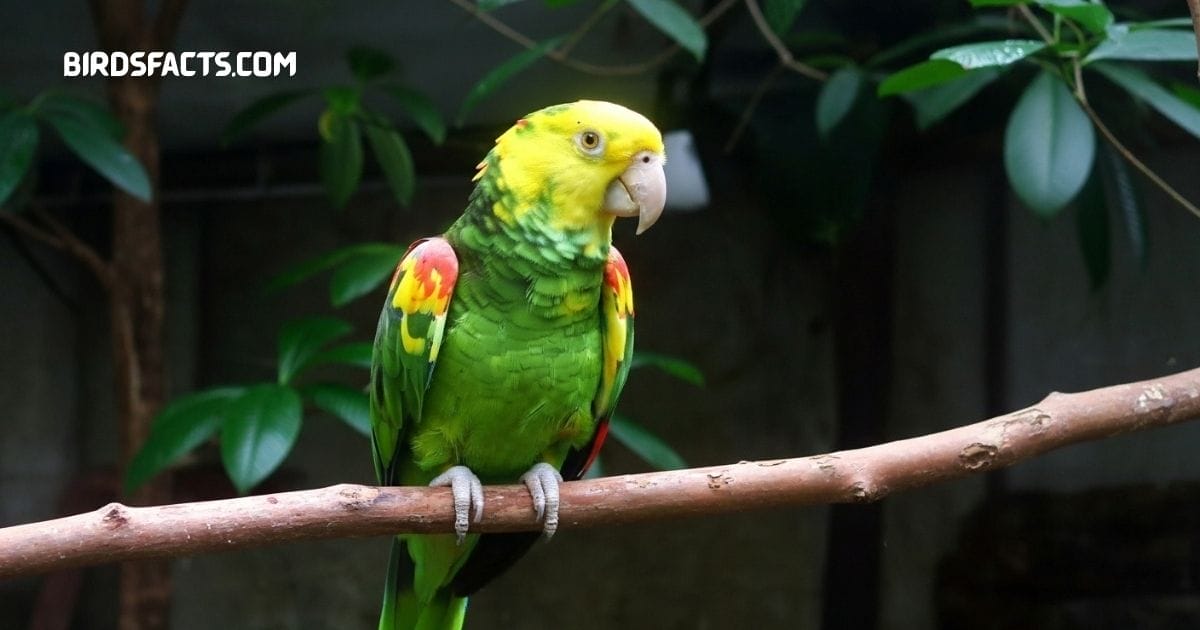
Yellow-headed Amazon Parrot With Bright Green Plumage And Golden-yellow Head Perched On A Tree Branch
The Yellow headed Amazon Is A Majestic Parrot With Striking Yellow Plumage On Its Head And Rich Green Body Considered One Of The Most Intelligent Parrots It Holds A Special Place Among Green Florida Birds. These Birds Are Highly Valued As Pets Due To Their Talking Abilities And Playful Personalities.
In Florida Feral Populations Have Established Themselves Making Them An Exciting Discovery For Birdwatchers. They Prefer Areas With Tall Trees Where They Can Nest And Find Food Easily Their Vibrant Colors Along With Their Lively Personalities Make Them One Of The Most Iconic Parrot Species In The State.
FAQs
What Is A Common Green Florida Bird Seen In Backyards?
Monk Parakeets Nanday Parakeets And Yellow Chevroned Parakeets Are Common Visitors.
What Is The Difference Between Native And Introduced Green Florida Birds?
Native Species Include Green Herons And Painted Buntings While Parrots Like Monk Parakeets Are Introduced.
What Is The Easiest Green Florida Bird To Spot For Beginners?
Monk Parakeets Green Parakeets And Budgerigars Are Beginnerfriendly And Easy To Identify.
What Is The Migration Pattern Of Green Florida Birds?
Some Hummingbirds Migrate But Most Parrots And Parakeets Remain Year Round In Florida.
What Is The Best Way To Attract Green Florida Birds To My Backyard?
Plant Fruiting Trees Use Feeders With Seeds And Provide Fresh Water To Encourage Visits.
Conclusion
Florida’s Landscapes Are Alive With An Incredible Variety Of Parrots Parakeets Hummingbirds And Herons Each Adding Its Own Tropical Touch. From The Playful Monk Parakeet To The Regal Yellow headed Amazon These Species Make Up The Fascinating World Of Green Florida Birds. For Birdwatchers Spotting These Colorful Residents Is Like Experiencing A Living Rainbow Across The Skies.
Whether You’re Exploring City Parks Wetlands Or Suburban Backyards There’s Always A Chance To See One Of These Birds. Their Adaptability And Charm Make Them Unforgettable Truly Green Florida Birds Bring Both Beauty And Biodiversity Reminding Us How Nature Continues To Surprise And Delight In The Sunshine State.
Further Reading
You May Also Check Out:
Thank You For Reading!


